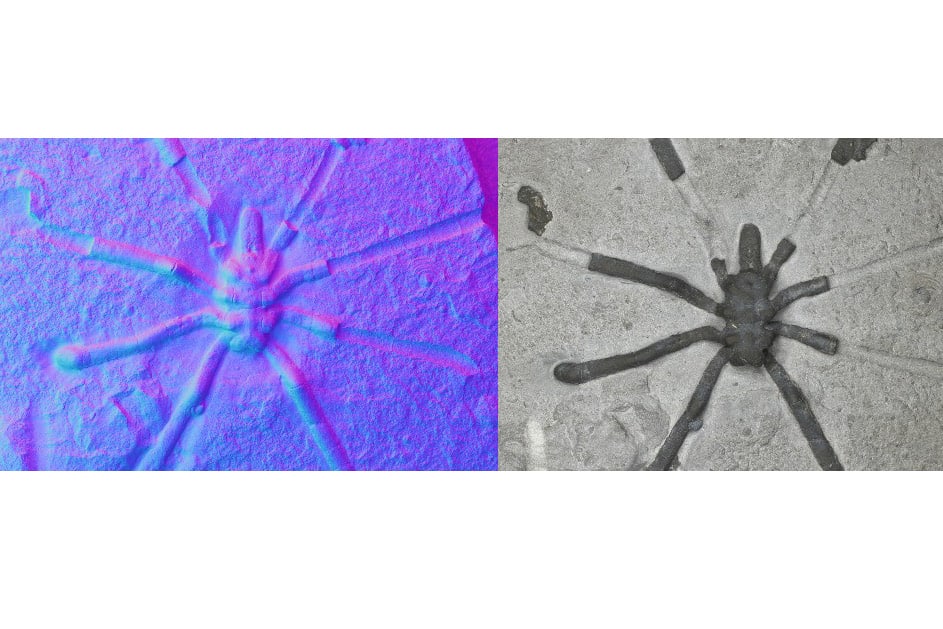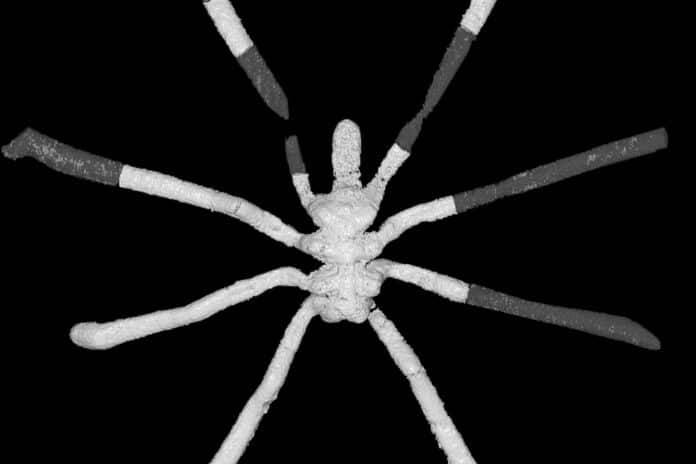Sea spiders are an enigmatic class of living arthropods. They are morpho-anatomically unique among arthropods, and in the past, this has led to their interpretation as the sister group of all other living arthropods, the so-called Cormogonida hypothesis.
Sea spider fossils are rare, but scientists have known a few from different periods. A new study reports that an extremely rare collection of 160-million-year-old sea spider fossils from Southern France are closely related to living species.
To comprehend the evolution of marine spiders, these fossils are crucial. They demonstrate that by the Jurassic, the diversity of marine spiders that is still present has already begun to form.
Lead author Dr. Romain Sabroux from the University of Bristol‘s School of Earth Sciences, said: “The fossils are very interesting to understand the evolution of arthropods [the group that includes insects, arachnids, crustaceans, centipedes and millipedes] as they appeared relatively early in the arthropod tree of life. That’s why we are interested in their evolution.”

“Sea spider fossils are rare, but we know a few from different periods. One of the most remarkable fauna, by its diversity and abundance, is the one of La Voulte-sur-Rhône that dates back to the Jurassic, some 160 million years ago.”
The La Voulte pycnogonids, in contrast to older sea spider fossils, are morphologically similar to current species (albeit not identical), and earlier research suggested they might be closely connected to living sea spider families. The limitations of their observational methods, however, limited these hypotheses.
As it was impossible to access what was hidden in the rock fossils, scientists went to Paris and investigated this question with cutting-edge approaches. They mainly used two methods: X-ray microtomography and Reflectance Transformation Imaging.
X-ray microtomography shows what’s inside the rock. Based on that, scientists reconstructed a 3D model of the fossilized specimen. Reflection Transformation Imaging is a picture-taking technique that depends on changing the direction of the light around the fossil to make hidden characteristics on its surface more visible.
Dr. Sabroux said, “From these new insights, we drew new morphological information to compare them with extant species.”
This demonstrated the close kinship between these fossils and living pycnogonids. Colossopantopodus boissinensis and Palaeoendeis elmii, two of these fossils, are members of Colossendeidae and Endeidae, respectively, two current families of pycnogonids. The third species, Palaeopycnogonides gracilis, appears to be a member of an extinct family.
Dr. Sabroux added, “Today, by calculating the difference between the DNA sequences of a sample of species and using DNA evolution models, we can estimate the timing of the evolution that binds these species together.”
“This is what we call a molecular clock analysis. But quite like a real clock, it needs to be calibrated. We must tell the clock: ‘We know that at that time, that group was already there.’ Thanks to our work, we now know that Colossendeidae and Endeidae were already’ there’ by the Jurassic.”
The team may now examine the timeline of Pycnogonida evolution using these minimum ages as calibrations for the molecular clock. For instance, they will be better able to comprehend how the various biodiversity crises throughout Earth’s history have affected their diversity.
They also have plans to look at additional pycnogonid fossil faunas, like the 400 million-year-old Devonian fauna found in Germany’s Hunsrück Slate.
Journal Reference:
- Romain Sabroux, Gregory D. Edgecombe, Davide Pisani, Russell J. Garwood. New insights into the sea spider fauna (Arthropoda, Pycnogonida) of La Voulte-sur-Rhône, France (Jurassic, Callovian). Papers in Palaeontology. DOI: 10.1002/spp2.1515
